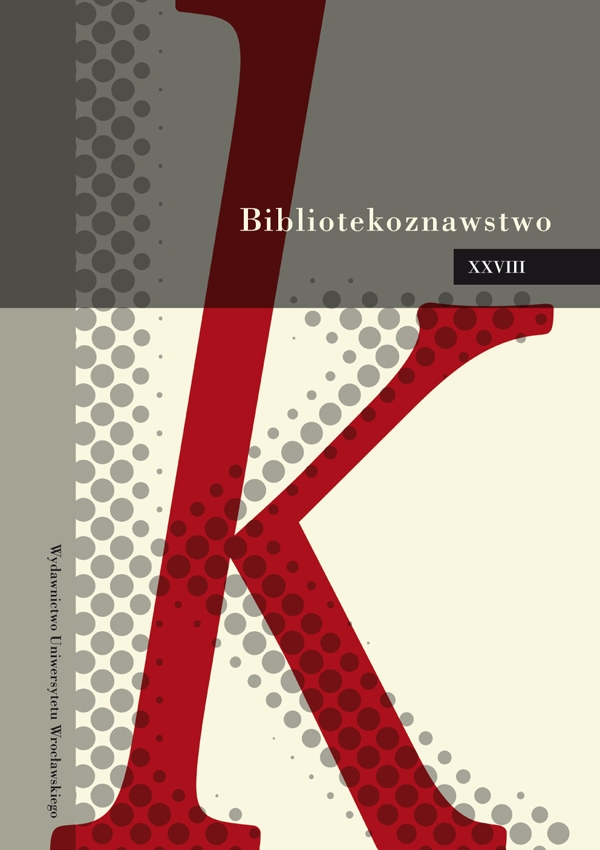Zbiory artystyczne, zbiory specjalne czy zbiory ikonograficzne? Typologia i funkcje
Abstrakt
Artistic collections, special collections or iconographic collections? Typology and functions
The article distinguishes and defines various categories of the so-called “iconographic collections” including Print Room, Department of Graphics and Drawings, iconographic collection. However, there is a difference between high quality works of art, such as drawings and prints, artistic photographs, and illustrated press cuttings or multiple reproductions of works of art and architecture, which are used only for information and documentation purposes. The substantial content of a collection determines its functions, organisation and tasks. Many institutions housing various collections combine academic work with exhibitions, making the collections available with basic editing, protection and preservation with digitalisation of items. The term “iconographic collection,” used mainly with reference to collections in libraries and archives, covers both excellent historic collections and random sets acquired by means of purchases, donations, deposits or the so-called wartime compensation. These collections contain “iconographic documents” that make up sets, less numerous groups or single items. They include both original works of art artistic and architectural drawings, prints, graphic plates, wood engraving blocks, miniatures, original photographs and even oil or tempera paintings and postcards, illustrated press cuttings, reproductions, examples of photographic documentation, cataloguing drawings conservation documentation, and others. The problem does not really concern such items as old printed books, manuscripts, music-related material and maps, traditionally treated separately because of their distinct nature; troubles start with “iconography”. This term, used initially by Greek writers as eikonographia to denote a visual representation, has been transferred directly to the “iconographic document” or visual document, a term preferred by American authors and thus to every image, regardless of its typology, form or carrier, as well as artistic, aesthetic, informative or cognitive values.

